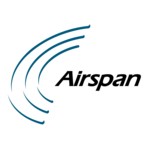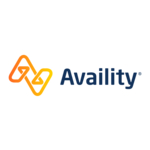2024 Financial and Product Development Objectives Met; Focus Turns to Securing Customers for 2025
Palladyne AI Corp Provides 2024 Year End Business and Financial Update
Investor Contact:
IR@palladyneai.com
Press Contact:
PR@palladyneai.com
Palladyne AI Corp. (NASDAQ: PDYN and PDYNW) (“Palladyne AI”), a developer of artificial intelligence software for robotic platforms in the industrial and defense sectors, today announced key business and financial achievements for 2024 in conjunction with the filing of its 2024 Annual Report on Form 10-K.
Full Year 2024 Highlights and Recent Developments
- Substantially improved balance sheet, with $40.1 million cash, cash equivalents and marketable securities on hand as of December 31, 2024, and an additional $14.4 million (before commissions and offering expenses) raised between January 1, 2025, and February 12, 2025, with no debt for borrowed money or other long-term financial obligations on the balance sheet other than the Company’s long-term office lease.
- Second half 2024 target of $1.6-$2.0 million net cash burn per month achieved, with approximately the same rate expected to continue through 2025.
- Commercial version of Palladyne IQ product for industrial robots and cobots launched, with new customer trials expected to occur in the first half of 2025.
- Commercial version of Palladyne Pilot product for small drones on track for commercial release by end of Q1 2025, with integration on Red Cat drones expected to quickly follow.
- Year over year revenues increased by 27% while operating expenses decreased by 73%.
- New three-year employment contract entered into with President and CEO, with Mr. Ben Wolff to receive targeted 2025 net cash salary received of $1 (after deductions for taxes and employee benefit contributions) for the first year, plus a significant long-term incentive opportunity based on stock value that, subject to certain acceleration provisions, is generally scheduled to vest after three years of continued service.
CEO Commentary
“2024 was a transformative year for the Company. We set out early in 2024 with an objective to commercialize our novel AI/ML software products which are designed to enable robots and other remote controlled machines to learn, reason, and act in a manner similar to humans. I’m delighted to report that we achieved this objective, with an improved commercial version of Palladyne IQ -- which is ready for on-site customer trials and purchase -- and our Palladyne Pilot drone product, which is expected to be commercially available by the end of the first quarter of 2025. Another key milestone for 2024 was to materially extend our financial runway by substantially reducing costs and opportunistically raising capital. Again, we achieved this objective, hitting our internal targets for expense reductions while also raising capital at valuations that were many multiples of the Company’s valuation at the beginning of the year.
Palladyne IQ
Palladyne IQ is a closed-loop, full-stack, AI software product built on our AI/ML foundational technology intended to make robots smarter so that they can perform jobs that have historically been too complex to automate. It is designed to enhance the utility and functionality of third-party robotic systems by enabling these systems to quickly observe, learn, reason and act in structured, unstructured and dynamic environments. It incorporates our artificial intelligence (AI) and machine learning (ML) foundational technologies that enable robotic systems to perceive their environment and quickly adapt to changing circumstances by generalizing (i.e., learning) from their past experience using dynamic real-time operations “on the edge” (i.e., on the robotic system) without extensive programming and with minimal robot training.
We are frequently asked whether we compete with the likes of OpenAI and whether the advancements of companies like DeepSeek have any impact on our business opportunity. The simple answer is “No” for a number of key reasons.
First, companies such as OpenAI and DeepSeek focus on what we refer to as digital world AI by building foundation models that leverage decades of internet-based information to provide humans with insights and information that would be virtually impossible for humans to develop at the same speed on their own. In contrast, we focus on what we refer to as physical world AI, where our AI is being applied to robotics to manipulate real objects in the real world. There is no existing massive repository or database of robot movements or actions that can be fed into a foundation model that will enable a robot to autonomously function in the real world. Furthermore, every robot is different – they come in a wide variety of shapes, sizes, and forms, and every environment is different. The diversity of robot designs means that data would need to be collected for each robot type, not to mention data from every environment in which each robot is expected to operate.
Secondly, many tasks are comprised of a sequence of discrete movements. Take, for example, the task of making a single cup of tea: one must fill the kettle, turn it on, pour hot water into a mug, and add a tea bag. If we want to teach a robot how to perform this task using a foundation model, we would need to send torque commands to all motors comprising the robot arm (industrial robotic arms commonly have seven motors) at a speed of around 40 Hz/second. Over five minutes, that adds up to 7*40*60*5=84,000 correct torque commands. Get one torque command wrong, and the robot will not complete the task as expected. This example is for a stationary robot arm -- things get even more complex with the addition of mobility or additional arms. In long lasting, complex tasks, errors compound over time, which is why even large language models (LLMs) struggle with fully coherent long texts. Similarly, robotic tasks involving thousands or hundreds of thousands of torque commands are challenging, even for well-performing models.
Compounding these challenge is that foundation models require massive compute power and enormous amounts of electricity to function. This kind of compute power can only live in the cloud, which means physical robots using foundational models would need to be continuously (or at least frequently) connected to the cloud to operate. Beyond the obvious communications challenges that could occur, particularly for mobile machines, there are substantial costs and potential latency issues associated with continuously connected robots functioning in the real world. We estimate that mobile robots functioning in unstructured environments could need to transmit and receive data from the foundation model in the cloud between one and four times per second in order to function as expected. Any connection or latency issues would then interrupt the robot’s task and have significant negative impacts on productivity, not only of the robot, but of any larger system or work flow in which the robot is working. The bottom line is that, at least for now, the digital world approach just doesn’t translate well to the physical world.
Our approach is fundamentally different and has been purpose built from the ground up to operate on real machines in the real world, without having to spend potentially years and hundreds of millions of dollars to collect, label and collate massive datasets. Furthermore, we believe our edge compute solution which avoids the need for cloud connectivity will yield better performance at a substantially reduced cost.
We begin 2025 with Palladyne IQ ready to be put through its paces by prospective customers. Earlier versions of the software were trialed by a large global manufacturer and by the U.S. Air Force, and their feedback is now being incorporated into the commercial version. We expect our AI to get more capable over time, just as one would expect an infant’s cognitive functioning, dexterity and skill to improve rapidly after birth. While it is early days, we are seeing strong interest from companies across a wide range of industries, including electronics manufacturing, heavy equipment manufacturing, automobile manufacturing, and aviation. We expect this interest to convert into customer on-site trials and ultimately sales. However, at this point, we are still discovering the typical buyer’s journey, including the duration of the sales cycle, who the key decisionmakers typically are, and how to overcome potential sales objections. As a result, we are still too early in our own journey to be able to provide near-term revenue projections.
Palladyne Pilot
Palladyne Pilot is an AI platform for unmanned systems that enables persistent detection, tracking, and classification of objects of interest by synthesizing multi-modal sensor fusion data in real-time. It facilitates shared situational awareness across multiple drones and autonomous navigation, including in GPS denied environments, when integrated with drone autopilot systems. We continue to test and improve the software, and currently expect to commercially release the initial version of Palladyne Pilot by the end of Q1 2025.
In October 2024, we jointly announced with Red Cat Holdings that we would be working together to make Palladyne Pilot available for some of Red Cat’s drones, including those already in the field. We subsequently announced the first successful completion of a flight in which multiple Red Cat drones equipped with Palladyne Pilot AI software autonomously collaborated to identify, prioritize, and track objects of interest on the ground. We have engaged in initial discussions with several other manufacturers about incorporating Pilot with their small drone platforms, and we believe that some of these discussions will gain traction after the commercial release of Pilot.
It is important to note that just as there are many different types of software programs that have different purposes and functionality for use on computers, so too are there many different types of AI that can be used on drones and other autonomous vehicles. For example, Red Cat recently announced a partnership with Palantir to provide certain AI capabilities for its drones, but Palantir’s AI offers very different features, functionality, and outcomes than Palladyne Pilot. We do not view these two AI products as competitive, and, in fact, we believe they could be complementary. The same could be said for many other AI or ML software programs that could be implemented on all manner of mobile machines. Oracle’s software is not the same as Microsoft’s, nor is Boeing’s software the same as Tesla’s -- different purposes, different architecture, and different value propositions.
Looking Forward
For 2025, you can expect us to be focused on securing customers for both IQ and Pilot, while continuing to hone and optimize both products based on customer feedback. We think we have developed a better mouse-trap, so now we need to prove it to our customers and our investors. We will continue to manage our expenses closely to give the Company the longest possible runway, while also continuing to strategically invest in marketing and sales opportunities to secure customers and be mindful of the impacts of dilution resulting from raising new capital. Based on the expenses we can foresee today, we believe that we have funds to operate the business for a minimum of two years of financial runway on hand, even if the sales cycle for our new products is substantially longer than we expect, which should give us ample time to generate real momentum with product sales.
Our policy regarding press releases, earnings calls, and investor conferences will largely remain the same as we announced last year when I rejoined the Company; we will keep investors informed of material developments, but we will resist talking just to talk.
For more information, please visit www.palladyneai.com and connect with us on LinkedIn at www.linkedin.com/company/palladyneaicorp.
About Palladyne AI Corp.
Palladyne AI Corp. (NASDAQ: PDYN) has developed an advanced artificial intelligence (AI) and machine learning (ML) software platform poised to revolutionize the capabilities of robots, enabling them to observe, learn, reason, and act in a manner akin to human intelligence. Our AI and ML software platform empowers robots to perceive variations or changes in the real-world environment, enabling them to autonomously maneuver and manipulate objects accurately in response.
The Palladyne AI software solution operates on the edge and dramatically reduces the significant effort required to program and deploy robots enabling industrial robots and collaborative robots (cobots) to quickly achieve autonomous capabilities even in dynamic and or complex environments. Designed to enable robotic systems to perceive their environment and quickly adapt to changing circumstances by generalizing (i.e., learning) from their past experience using dynamic real-time operations “on the edge” (i.e., on the robotic system) without extensive programming and with minimal robot training. Palladyne AI believes its software has wide application, including in industries such as automotive, aviation, construction, defense, general manufacturing, infrastructure inspection, logistics and warehousing. Its applicability extends beyond traditional robotics to include Unmanned Aerial Vehicles (UAVs), Unmanned Ground Vehicles (UGVs), and Remotely Operated Vehicles (ROVs). Palladyne AI’s approach is expected to elevate the return on investment associated with a diverse range of machines that are fixed, fly, float, or roll.
By enabling autonomy, reducing programming complexity, and enhancing efficiency, we are paving the way for a future where machines can excel in tasks that were once considered beyond their reach.
Forward-Looking Statements
This press release contains forward-looking statements within the meaning of the Private Securities Litigation Reform Act of 1995, including statements regarding future cash burn, business strategy, software product development, expectations and timing related to commercial software product launches, the capabilities or future capabilities of the Company’s foundational technology and products, the benefits of the software foundational technology and products and the industries that could benefit from them, the applicability of the foundational technology, Palladyne IQ and Palladyne Pilot to different kinds of machines (such as UAVs, UGVs and ROVs) and the potential success of Palladyne AI’s strategy. Forward-looking statements are inherently subject to risks, uncertainties, and assumptions. Generally, statements that are not historical facts, including statements concerning possible or assumed future actions, business strategies, events, or results of operations, are forward-looking statements. These statements may be preceded by, followed by, or include the words “believes,” “estimates,” “expects,” “projects,” “forecasts,” “may,” “will,” “should,” “seeks,” “plans,” “scheduled,” “anticipates,” “intends” or “continue” or similar expressions. Such forward-looking statements involve risks and uncertainties that may cause actual events, results, or performance to differ materially from those indicated by such statements. These forward-looking statements are based on Palladyne AI’s management’s current expectations and beliefs, as well as a number of assumptions concerning future events. However, there can be no assurance that the events, results, or trends identified in these forward-looking statements will occur or be achieved. Forward-looking statements speak only as of the date they are made, and Palladyne AI is not under any obligation and expressly disclaims any obligation, to update, alter or otherwise revise any forward-looking statement, whether as a result of new information, future events, or otherwise, except as required by law.
Readers should carefully review the statements set forth in the reports which Palladyne AI has filed or will file from time to time with the Securities and Exchange Commission (the “SEC”), in particular the risks and uncertainties set forth in the sections of those reports entitled “Risk Factors” and “Cautionary Note Regarding Forward-Looking Statements,” for a description of risks facing Palladyne AI and that could cause actual events, results or performance to differ from those indicated in the forward-looking statements contained herein. The documents filed by Palladyne AI with the SEC may be obtained free of charge at the SEC’s website at www.sec.gov.
View source version on businesswire.com: https://www.businesswire.com/news/home/20250220636093/en/
 Business wire
Business wire 











Add Comment